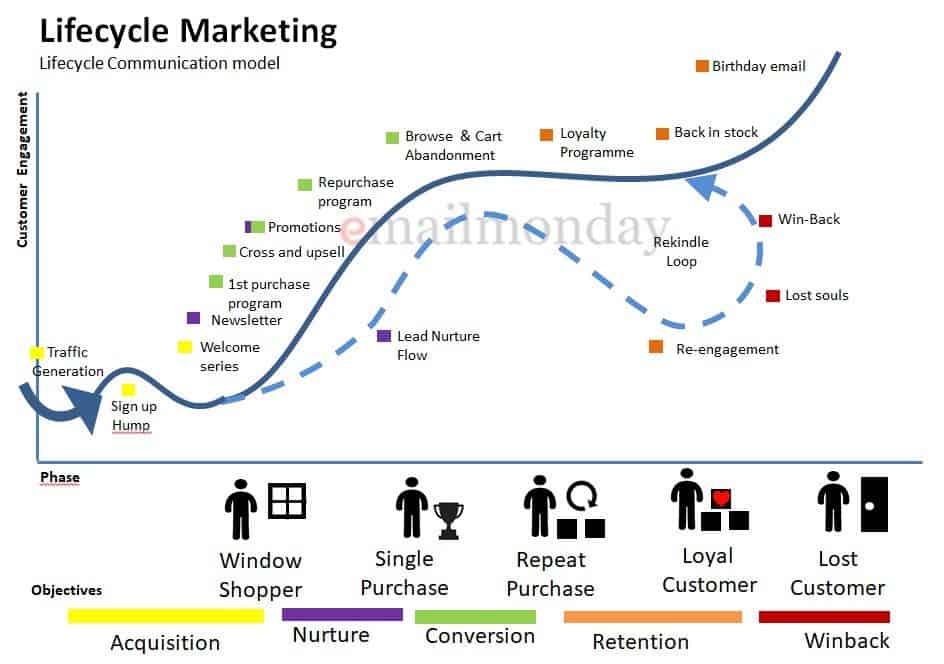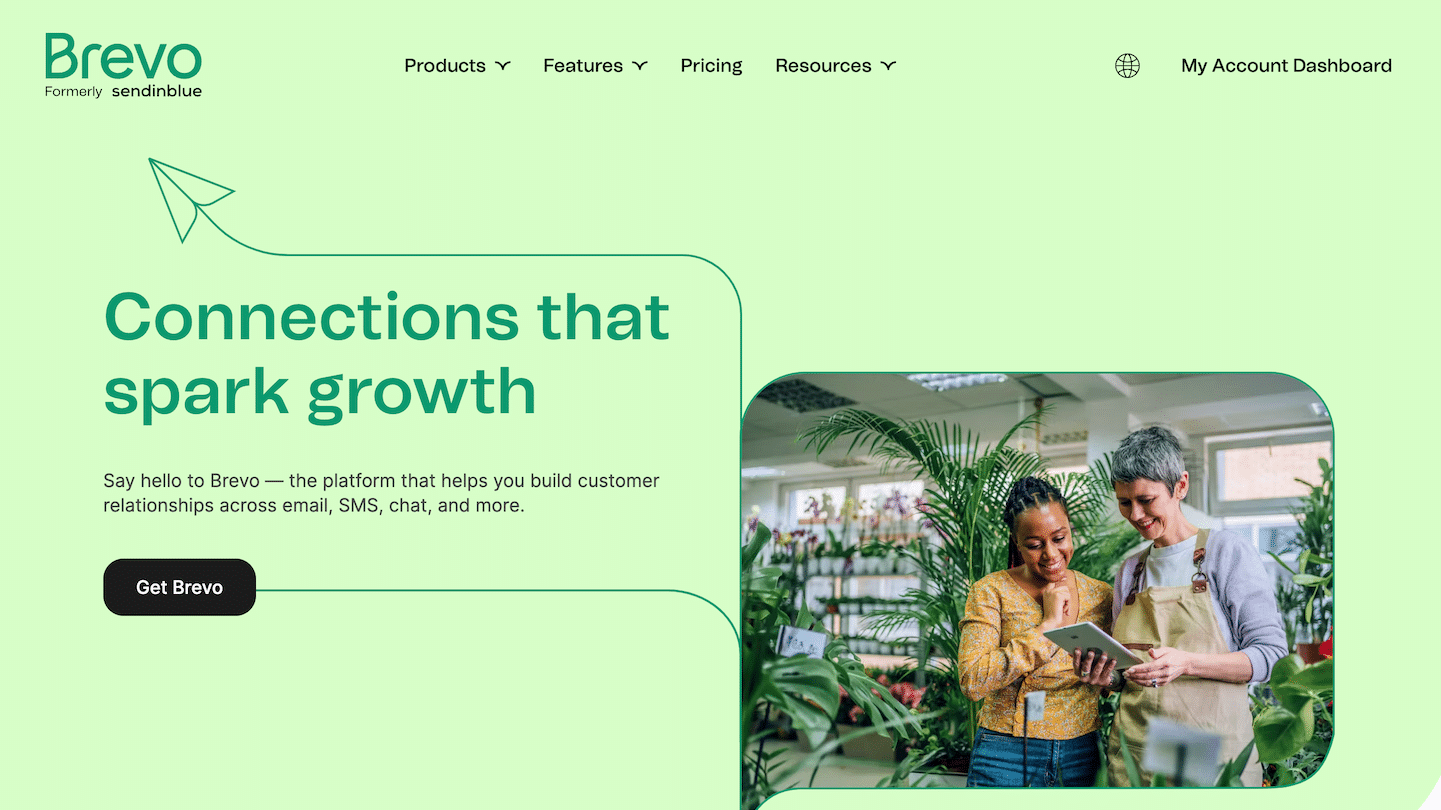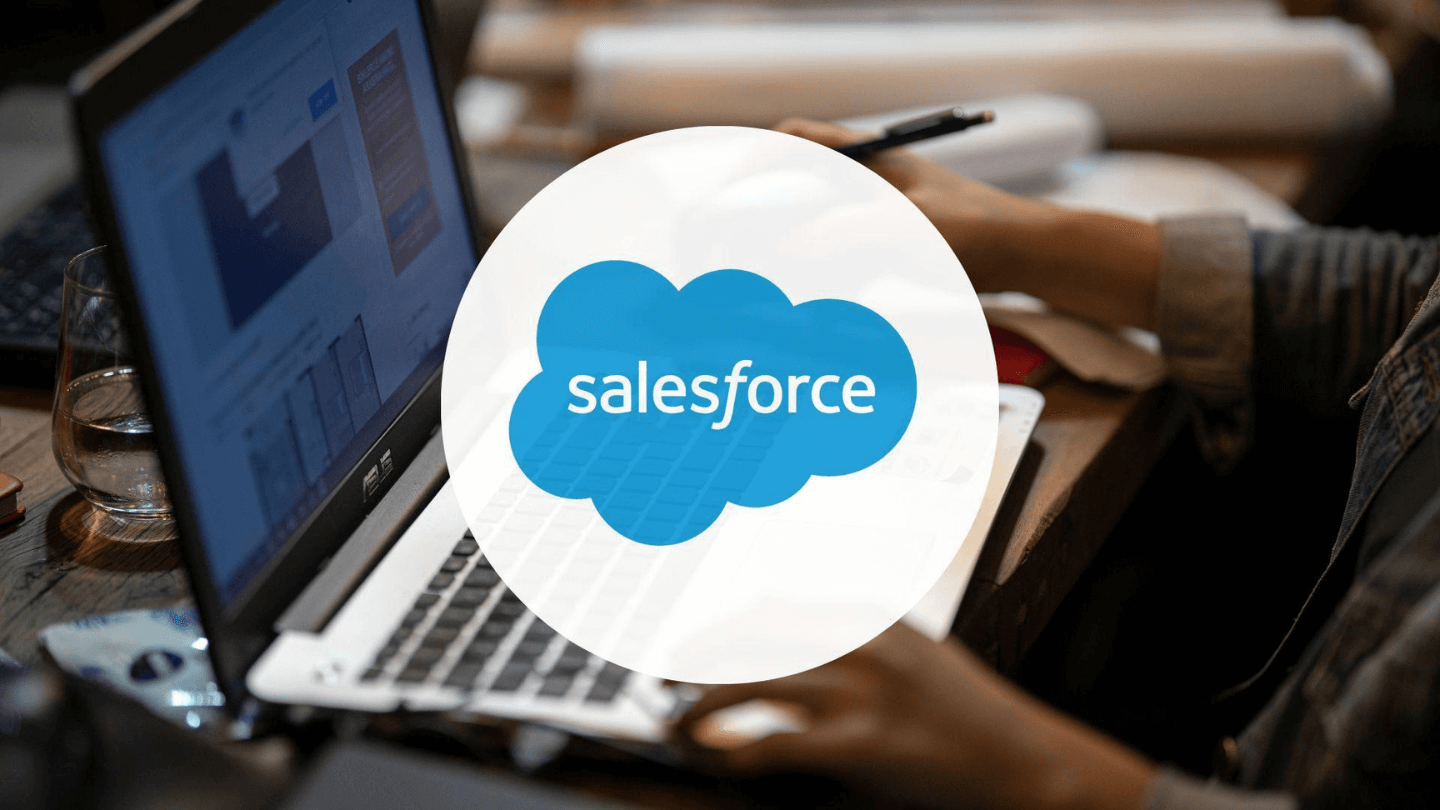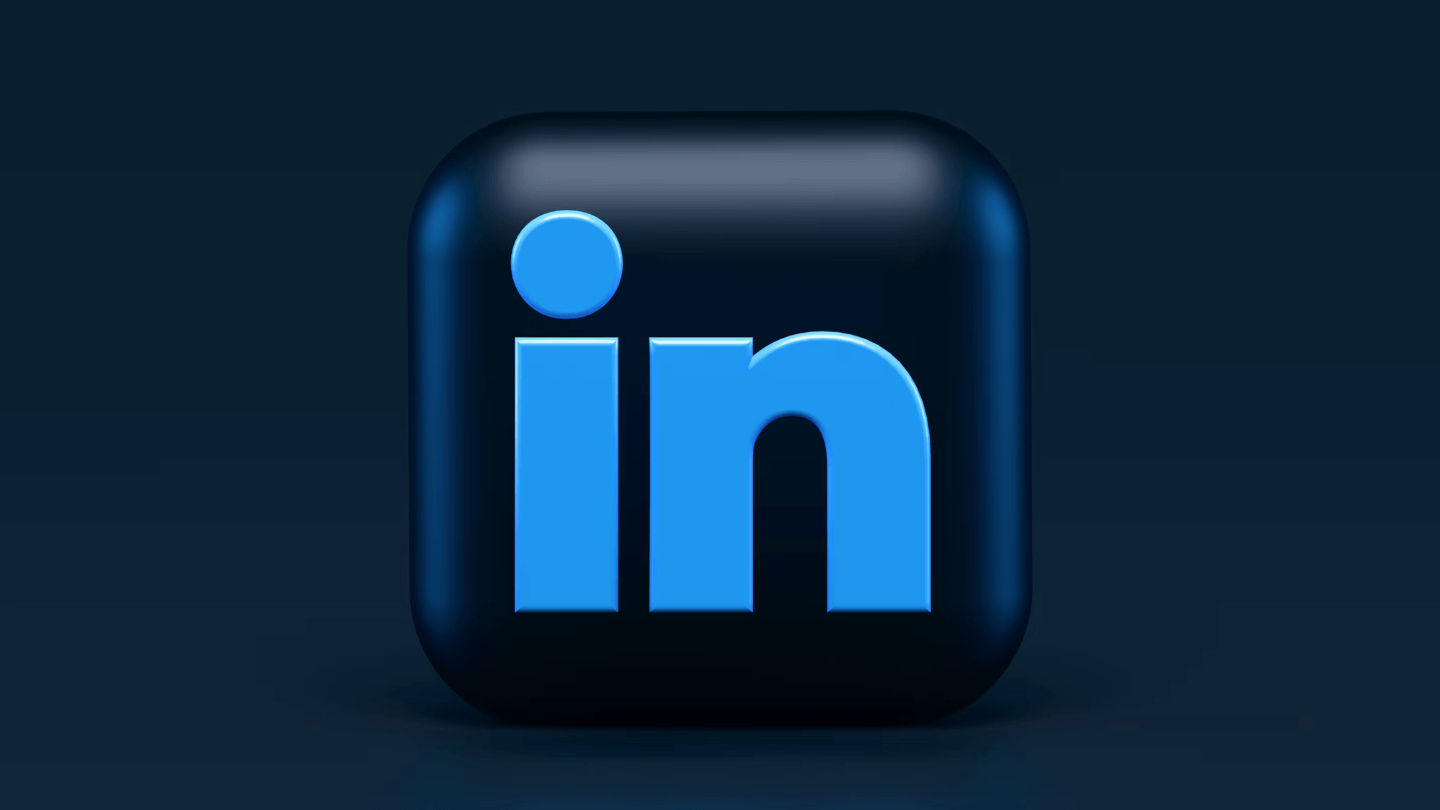Do you want to use email to better communicate with your prospects? Do you feel that you are only capturing a tiny fraction of your potential customers? This step-by-step guide will help you implement a real email strategy for your B2B business to move your prospects through your conversion funnel.
Sommaire
Step 1: Set your goals
The first step is to define your objectives.
Think about what you want to achieve through your email campaigns: is it to convert more or less active leads that have been following you for several years? Is it about building authority around a key topic for your business? Or is it more about generating a pipeline of inbound leads that you can qualify & process commercially?
These objectives will determine :
- Your target
- The type of campaigns you send
- The content and form of your emails
- Criteria for measuring the success of your campaign
Start with your key performance indicators and business objectives and then think about how you can align them with your B2B email campaigns.
Email is the most powerful channel for reaching your audience. But without clear objectives, you won’t get the results you want. So when you are starting out, take the time to develop a real strategy.
Step 2: Choose an email marketing tool
Once you have defined your goals and developed a strategy, it’s time to choose an email marketing software that will help you achieve them.
The right platform with a solid strategy can save you time and money and increase your sales.
Here is a list of elements to take into account when choosing an emailing tool:
- Does it have an easy to use drop & drag email editor?
- How can I import and export my contact database?
- Does the company offer a free migration service?
- How can I manage my contacts?
- What kind of analysis and reporting does it have?
- Can I create registration forms? And can I easily integrate my existing ones?
- Can I easily create automation scenarios?
- Does it integrate with other software, for example Landing Page solutions?
- Can I create A/B tests?
- What is the delivery rate?
- Can I get a free trial?
- Is customer support fast and efficient?
Step 3: Build your email list
Now it’s time to build your mailing list.
Depending on your business processes, you have two options:
- 1. You can opt tobuy a prospecting file and create pure prospecting campaigns. For this, we recommend that you choose your supplier carefully. In this case, we have another complete guide on B2B prospecting emails, which has nothing to do with this one 😬.
- 2. You can build your list, and develop a whole nurturing cycle. Don’t worry, it’s much easier than it sounds. However, let’s be honest, it’s a medium-term investment.
The first thing you need to do is to understand your target audience.
I recommend creating buyer personas that represent your ideal customers.

Source: OptinMonster
This will help you to know where you can reach them. Without knowing this, you will find it difficult to collect emails.
Email is an online channel, but you can build your list online and offline.
There are over 3.7 billion email users in the world and it is likely that many of them are not avid internet users. So, depending on your business and your personas, you can determine the path you choose to build your list.
Here are some examples of methods to collect emails:
1. Optimise your website for opt-ins
When someone visits your website, they show an interest in your product or service. By setting up subscription forms for your newsletter, you can add interested people to your mailing list.
2. Put forms on your blog
The same applies to your blog. The readers of your articles are likely to be interested in the topics you cover. If they like your content, a good percentage will want to subscribe to your newsletter.
3. Use lead magnets
You can go even further. Create ebooks, checklists, spreadsheets, templates or videos on the topics you cover on your blog.
These will be your main magnets or content upgrades. This type of content should provide additional value in a usable form.
Create landing pages where users can sign up to receive your lead magnets. Put CTAs (call-to-actions) in your blog posts so that people who want to know more about a specific topic can access them.
An email course is the best type of lead magnet for building an email list. On the one hand, it attracts the right traffic and subscribers will be waiting for your emails. This makes it easier to build relationships and qualify. Plus, it’s easy to implement.
4. Create pop-ups or contextual forms
Contextual pop-ups and behaviour-based forms are ideal for growing your list. If you set them up correctly, you can dramatically increase your subscriber base. One thing to consider when setting them up is the context.
For example, set a pop-up to appear when someone is halfway through your article. Even better, set it to appear in a fixed position on a part of the screen where it is most relevant.
5. Using social networks
Social selling is not just a fad. Social networks (Linkedin in particular) are a very effective way to grow your list. Put links to your landing pages in your profile descriptions. Go a step further and think about which lead magnet is best suited for each platform.
Also create publications or ads with links to your lead magnet.
6. Cooperate with business partners
You can exchange a mailing list with companies. Make sure you do it with the right companies, the audience must be the right one.
I recommend using the same sender name that is usually used for their newsletter. Otherwise, your open rate may suffer, as most people will have no idea who sent the email.
In the subject line or preview of the text, you can mention that it is not just a newsletter. Some new content with a new perspective can intrigue subscribers.
You can also share their content on your social networks and newsletter and ask them to link to your landing page in their newsletter.
7. Create a community
These days, getting an email address is much harder than it used to be. You have to offer real value for people to choose to pass it on to you.
Creating an online community is a great way to show people what you can contribute and it’s less of a commitment. Today, people will rather join a Facebook or Slack community, then give you their email.
8. Be active in blogs and communities
By liking or commenting on the content of others in your industry, you can position yourself as a leader in your field. And it can help you grow your list. If relevant, link to a blog post or mention your company.
Don’t spam and don’t forget to include a link to your blog or landing pages where people can sign up.
9. Create promotional offers by email only
By offering promotional offers only by email, you can greatly encourage people to give it to you. In addition to the great offers, it gives subscribers a sense of exclusivity.
10. Ask those already involved to sponsor new subscribers
If you already have committed subscribers on your list, ask them to refer their friends or colleagues, it’s an easy way to give your list an extra boost.
11. Organising or attending events
Developing your lead collection outside of the web is a great way to build relationships that will help you grow your business. If you are organising an event you can invite them to respond to your invitation by email.
You can even ask guests to leave their email on a paper form. However, I do not recommend this option as it requires too much manual work and you may encounter several difficulties in many ways. There will be typos when people fill in the form and when you import the contacts into your database.
12. Direct mail
If you have the physical address of some people, but no email, send them a direct mail offer that they can only get by opting in to your blog or a specific landing page.
13. Joining business groups
Search for and join relevant professional networking groups. Then ask around to see if it is possible to include a link to your opt-ins in their newsletters.
14. Add a QR code or URL to your printed material
Print is not dead! If you are using print ads, leverage them to expand your list by adding a QR code or a short, easy-to-enter and remember URL. You can also do this on your invoices.
15. Use a viral marketing tool
With a viral marketing tool such as UpViral or ViralLoops, you can run competitions and prize draws. These campaigns can quickly add contacts to your mailing list.
16. Collect business cards at trade shows, conferences and workshops
Trade shows, conferences and workshops are good opportunities to collect business cards. After the event, send an email with a registration confirmation. You can even link to a dedicated landing page where they can register.
This is important because people don’t give you their cards so you can add them to your marketing list. So I recommend getting permission first.
17. Don’t forget paid advertising campaigns
Run paid advertising campaigns on your lead magnets and your best blog posts. If you offer lead magnets, drive traffic to a landing page and optimise the campaign for conversions. For blog posts, drive traffic to that site with a pay-per-click campaign and optimise it with call-to-actions to drive them to the magnets.
This list should give you an idea of where you should focus your attention according to your persona, your business model and your resources.
Step 4: Pre-qualify and engage your leads with automation scenarios.
Once you have managed to get a mailing list for your emails, it may be worth sending a series of automated emails to build a relationship with your prospect who will then be more likely to look at your offer.
This is where all the brainstorming in step 1 really comes in handy. The objectives you have defined will determine the type of campaigns you will run.
Want to know more about pre-qualifying and engaging your leads? Check out our complete guide to lead nurturing to qualify, score and nurture your leads with automated scenarios.
You can send hundreds of types of marketing emails, but we will now focus on the two main groups: emailings and automation scenarios.
1. Emailings
Newsletters and marketing offers are the most common examples of email campaigns. But for some companies, the use of Lead Magnet is sufficient without the need for weekly or monthly newsletters.
The main things to consider when selecting the types of emails you should send are
Aim of the campaign
Is it better to send newsletters, announcements, marketing offers, customer and brand testimonials, event invitations? None of these? All of them? You decide!
Mailing schedule
How often will you send emails? Weekly, monthly, quarterly?
It may be a good idea to send a weekly newsletter, but sending emails with a discount coupon every week may not be a good idea.
Weekly emails are great because they are regular enough that subscribers don’t forget about you and you don’t overwhelm them with useless emails. If you produce enough content to send an email with real added value every week, go ahead!
Monthly emails also work well for marketing offers and newsletters. But it is better to send other types of emails in between. Otherwise, your subscribers might forget you exist and your emails will be lost in the mass of competing emails.
2. Automation
According to Epsilon Email Institute, automated emails have on average 70.5% higher open rates and 152% higher click-through rates than traditional marketing messages.
Now, I’m going to review the most common email automation campaigns:
Automated welcome to blog subscribers
Someone has chosen to receive your newsletter. You have converted a blog visitor into a subscriber. That means they are genuinely interested in your content. But over time, that interest will start to fade, so you need to build on that initial momentum.
Did you know that about 75% of users expect a welcome email after signing up? Furthermore, 90% of users become inactive after one hour.
Your automatic welcome emails should not be sent too far apart in time. This allows you to keep your subscribers engaged and interested for a longer period.
According to our internal data, new subscribers are the most active and engaged in the first six months. After that, you need to work harder to reactivate them.
A welcome automation is very effective, because :
- 1. Your subscribers can learn more about you.
- 2. You create momentum and drive new readers to your old content.
- 3. A deeper relationship is created.
I would recommend using about 3-5 emails in a welcome automation. First send a welcome email in which you introduce yourself or your company. You can also ask a relevant question in the first 2 emails. This is a great way to get valuable feedback on your content and product, which you can use to refine your strategy.
In subsequent emails, share some of the most popular blog posts. In the final emails, you can even add a CTA (call to action) to your most relevant main magnet.
Automation of the follow-up by Lead Magnet
Create an automation for each of your Lead Magnets, in which you share additional resources around the topics they cover.
The first automation email should contain the download link to your magnet, and I recommend a brief introduction to your brand.
In subsequent emails, share additional resources on the same topic as your magnet. These could be blog posts, white papers, podcasts, etc.
Email courses
Email courses can be a good strategy to qualify your leads. Especially if you have an ebook or a very long blog post. You can simply break it down into 5-7 parts and you already have the gist of the content.
Start with a welcome email containing an overview of the course and the first lesson.
Then, depending on the number of emails in your course, set up the automation so that an email is sent daily or every other day.
Cross-sectional and incentive-based automation
Use cross-automations and incentives to increase the business value of your existing customers. Take a look at what they have bought and tailor your offers accordingly.
However, I do not recommend re-launching a new customer with other offers immediately after a purchase.
After a customer has made a purchase, wait a little while to start communicating again. Of course, this depends on your industry and in particular on the length of your sales cycle.
In the emails, mention the person’s previous purchase and describe the obvious benefits of the new product/service you are recommending. If you have other related products, you can include them in future emails.
In the final emails, I would suggest offering a discount as a last-ditch effort to make a purchase.
Add your non-web traffic prospects to your email scenarios
Let’s say you’ve generated leads at an event. Of course, you want to convert these leads into paying customers. The best way to do this is to use advanced automation.
Start by importing the contacts you collected at the event.
Create an automation with a few follow-up emails. In the first email, thank them for coming to the event and recap what happened at the event. Also write a short summary of the following emails so they know what to expect.
Conclusion
Once you have created a real relationship with your prospect, the last step is to write your prospecting emails.
The main factors that will make your email campaigns successful are the personalisation of your emails, their subject lines, and the analysis of your campaigns to adjust your content.
We have already written articles on this subject to help you implement them properly:
You now have all the cards in your hands to create your email prospecting campaign! Leave us your opinion in the comments section.







